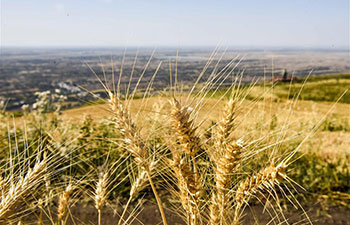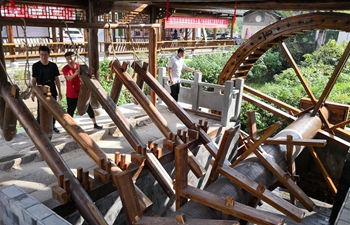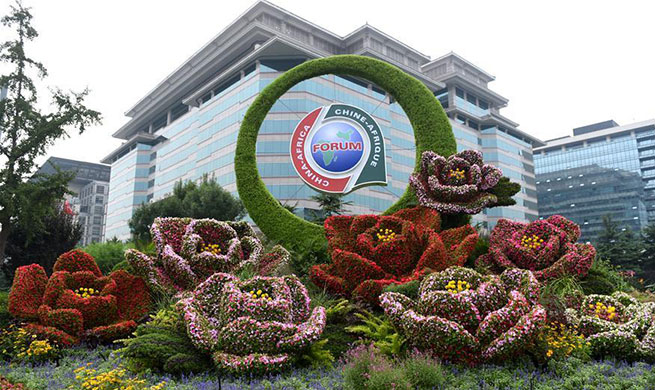by Xinhua writers Gao Wencheng and Yuan Ruting
CHANGSHA, Aug. 28 (Xinhua) -- While her colorfully clad students sing folk songs and offer tourists homemade rice wine, 83-year-old Gong Guimei enjoys watching and humming along.
Gong lives in Matouxi Village, a mountainous Tujia ethnic enclave in central Hunan Province. As one of the village's few elders who can perform the traditional Tujia dances and songs, she established a village art troupe seven years ago.
While Gong's homeland is rich in natural beauty and scenic landscapes, the rugged terrain causes the poverty-stricken village to suffer from a lack of transportation and arable land.
"Many young people left to work in cities. The villagers rarely sing and learn Tujia songs nowadays," Gong said. "At first, I couldn't find the right students to teach."
In 2011, Zheng Minghua, the Party chief of the village, realized that "the Tujia culture is the pearl of the village and we must protect it to develop ourselves."
Zheng encouraged the villagers to join the art troupe led by Gong saying,"Our village is now left behind. We have to sing about our village aloud and promote ourselves."
Gong wasted no time before recruiting members, directing performances and training her members, with only a few days off for harvesting rice.
"Our motivation is to tap our culture to bring a better future for our village and lives," Gong said.
In 2014, the local Yongding district government announced policies to support the distinctive economy by combining culture and tourism. The next year, a work team arrived in Matouxi to help villagers fight poverty, and rural tourism development also entered the fast lane.
The members of the village art troupe expressed their feelings through song and dance inspired by their daily lives, including farm work. The songs and dances create an interesting way for domestic and international tourists to learn about the village.
"Our village is beautiful, and tourists are welcome," the choir sings, expressing their happiness and hospitality to visitors.
The tourism boom brings villagers home. Zhang Huarong, the lead singer of the village art troupe, returned to the village last year to learn the Tujia language and songs.
"I came back because my hometown has developed, "she said. "I want to contribute my strength to the future of my village."
Today, Tujia songs are once again heard all over the village. The art troupe's performances take place each day, and Zhang's daily income can exceed 300 yuan (about 44 U.S. dollars) in peak seasons.
"They are very focused on every show despite the scorching heat," said Tian Haowen, a painter spending a few months in the village. "The villagers often share water and harvested peanuts with me. The hospitality in Tujia impressed me."
In 2017, the Tujia village received about 150,000 tourists, and the per capita income of the villagers increased from 1,890 yuan (277 U.S. dollars) in 2014 to 5,350 yuan (785 U.S. dollars).
The ethnic culture in the village attracts tourists, and the growing tourism industry provides an opportunity for the conservation of ethnic culture and skills otherwise lost.
"Relying on inheritance and promotion of our own culture to live a better life, all the troupe members are highly motivated," Zhang said.















